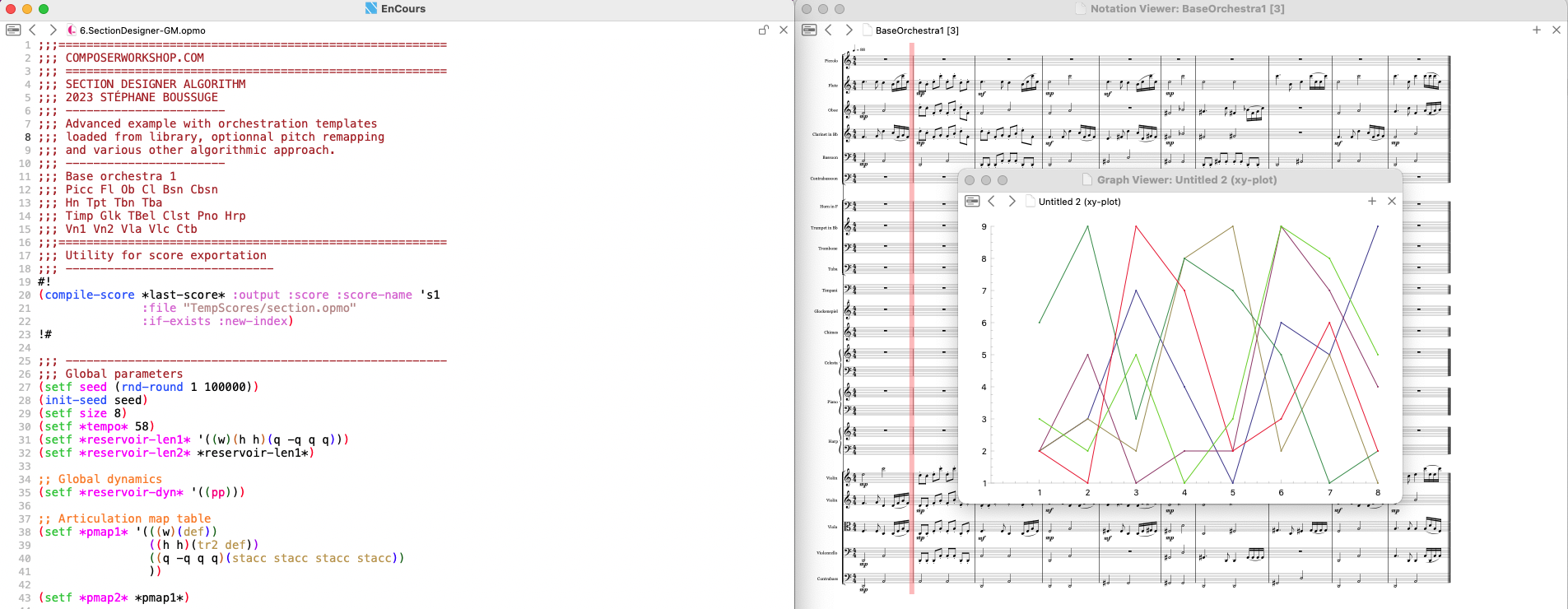
Welcome to the course on “Designing Generative Orchestral Templates with Opusmodus”!
In this course, we will explore the fascinating world of computer-assisted composition, specifically focusing on the powerful music composition environment known as Opusmodus.
Opusmodus is a cutting-edge software tool that empowers composers, music theorists, and researchers to create complex and innovative musical works. It combines the power of advanced programming capabilities with a user-friendly interface, enabling users to design generative orchestral templates with unprecedented flexibility and control.
Throughout this course, we will delve into the fundamental concepts and techniques of generative composition and learn how to harness the capabilities of Opusmodus to design orchestral templates. We will explore various compositional algorithms, explore the use of Opusmodus music notation, and dive into the vast array of orchestral possibilities that Opusmodus offers.
By the end of this course, you will have gained a deep understanding of computer-assisted composition and be proficient in using Opusmodus to create intricate and expressive orchestral compositions. You will have the tools to explore new sonic territories, experiment with generative techniques, and push the boundaries of your musical creativity.
Whether you are a composer, a music student, or a researcher in the field of computer-assisted composition, this course will provide you with valuable knowledge and practical skills to enhance your creative process and open up new avenues of exploration in your musical endeavors.
Get ready to embark on an exciting journey through the realm of generative orchestral composition with Opusmodus. Let’s dive in and unlock the boundless possibilities that await us in the intersection of music, technology, and creativity!
This course is designed for a wide range of individuals interested in computer-assisted composition and orchestral music. It is suitable for:
1. Composers: Whether you are a professional composer or an aspiring one, this course will provide you with valuable insights into the world of generative composition and how it can be applied to orchestral music. You will learn techniques to enhance your creative process and expand your compositional palette.
2. Music theorists: If you have a background in music theory and are intrigued by the intersection of music and technology, this course will introduce you to the possibilities of using Opusmodus as a tool for exploring theoretical concepts and experimenting with new compositional ideas.
3. Music students: If you are currently studying music at the undergraduate or graduate level, this course can supplement your education by introducing you to the concepts and techniques of computer-assisted composition. It will provide you with practical skills that can enhance your music production and composition capabilities.
4. Researchers: For those engaged in academic research in the field of computer-assisted composition, this course can serve as a valuable resource. It will offer insights into the latest developments in generative composition and provide you with a solid foundation for further exploration and experimentation.
In this course, you will learn the following key concepts and skills:
1. Gain a comprehensive understanding of the Opusmodus software and its capabilities as a tool for computer-assisted composition in the context of orchestral music.
2. Generative Composition Fundamentals: Explore the fundamental principles of generative composition and learn how to apply them to orchestral templates. Understand concepts such as algorithmic composition, randomness, variation, and musical structure.
3. Creating Orchestral Templates: Learn how to design and create orchestral templates using Opusmodus. Understand the various parameters and techniques involved in shaping the orchestral sound.
4. Compositional Algorithms: Explore a range of compositional algorithms available in Opusmodus and learn how to use them to generate musical material.
5. Exploring Orchestral Possibilities: Experiment with Opusmodus to explore a variety of orchestral possibilities. Learn how to create textures, transitions, and orchestrational effects that enhance the expressivity and richness of your compositions.
6. Creative Applications: Gain inspiration from real-world examples and case studies showcasing the creative applications of generative orchestral templates. Learn how Opusmodus has been used in contemporary compositions and explore innovative approaches to orchestration and musical expression.
By the end of this course, you will have acquired a solid foundation in designing generative orchestral templates with Opusmodus. You will be able to utilize Opusmodus as a powerful tool to create complex and expressive orchestral compositions, pushing the boundaries of your musical creativity.

